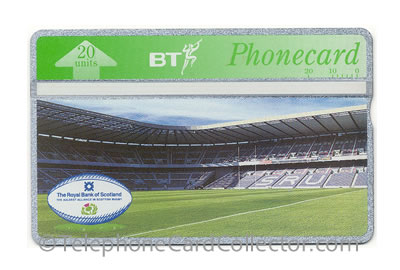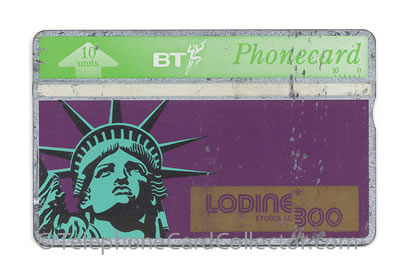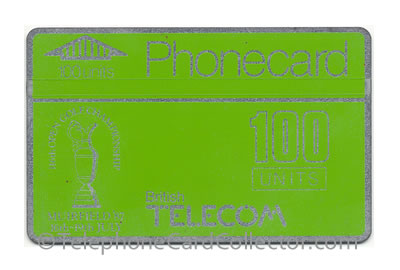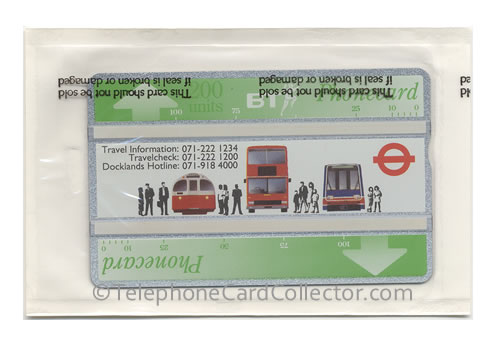Collectible Phone Cards
Phonecards; merely a means to make a telephone call from a public payphone? No, not when you look at the extensive catalogue of issues, the designs, the themes, the occasions they celebrated or commemorated. It's not hard to see how phone cards have become desirable collectors items. Today it is a hobby that is followed by people the world over.
What is a telephone card? Read more about telephone cards.
Almost every country in the world has in the past or still continues to issue telephone cards. Like stamp collecting, with so many different issues, some in large number, some in very small numbers, collectors of all ages have been bitten by the bug to start collecting them.
Miniature masterpieces
Quite literally over the years thousands of unique designs, themes and sets of cards have been produced on the credit card sized pieces of plastic containing pre-paid payphone credit.
Each card being designed from an idea or concept and like art, the vision was created into a design that would occupy the small space on the front (and sometimes back) of the telephone card.

Pictured above - Royal Bank of Scotland / Scotland v South Africa Rugby BT Phonecard issued in 1994.
Designs vary from Christmas themes to TV and film themes to wildlife themes. While other designs simply help to advertise and promote a brand or business.
Early phone card designs only occupied two thirds of the face of the card, while later issues with advances in card printing and card technology, meant that designs could be printed in full on both sides.
Phonecard Collectors (Fusilatelists)
Gone are the days of using telephone cards as a means to make telephone calls, however these highly collectible pieces of plastic are still collected by fusilatelists (telephone card collectors).
The vast majority of these fusilatelists seek a mint/unused copy of a card to add to their collection, a used card could have little or no interest, while an identical card which hasn't been used could get a lot of interest and ultimately achieve a much higher price.

Pictured above - a used and marked Lodine BT Phonecard - this card would have little to no value in today's market.
Read more about the current value of BT Phonecards.
Rare cards
Like most hobbies centred around collecting, you have your commonly seen items and you also have rarely seen too. Phonecard collecting is no different and although prices have fallen from their heights in the late nineties. Rarer and more scarce cards do still attract a premium price. A listing on ebay in June 2013 for a very rare and collectible Singapore Telecom $10 card with a photograph of Clifford Pier sold for £999.99p!

Pictured above - First commemorative 100unit BT Phonecard issued for the 116th Muirfield Open Golf Championship in July 1987.
Collectors
Collectors also known as fusilatelists, may decide to collect a specific countries cards e.g. Australia or cards from a particular telecom company e.g. France Telecom. While other people may simply buy a few phone cards to add to another collection centred around a theme or genre e.g. Star Wars or music themed phonecards, or all cards that features aircraft, cars or other vehicles.

Pictured above - Mint sealed 200unit London Regional Transport BT Phonecard
Whatever the reason for collecting, it's a hobby I'm sure that will live on for many years to come.
If you'd like to start collecting phonecards and would like to know more.
Plus if you'd like to buy a telephone catalogue or album page inserts specifically for phonecards please visit the online shop.
Questions and Answers
Question: What is the difference between optical and chip telephone cards?
Answer: The two are different forms of technology, optical cards were produced by Landis & Gyr for British Telecom between 1981-1996, while chip cards were produced for by GPT (and a few other companies) between 1996 and 2002 for BT and replaced Landis & Gyr optical card technology.
Mercurycard's (another telecom operator in the UK) used magnetic cards, a different form of technology again.
Question: Did BT or other telecoms make the same versions of a Phonecard in both optical and chip format?
Answer: No, one form of card technology replaced the other. Although it was possible to find companies using BT and Mercury to advertise their brand or product - so that's optical and magnetic version or similar designed cards.
In addition when BT switched from using optical card technology in 1996 to embedded micro chip technology, some companies cancelled their order for optical cards in favour of the new chip card technology, BUT this was too late in some cases for the production line to be haltered. So some BT Phonecards exist in both optical and chip card form, but this is very usual.
Question: Did BT make any red arrows cards?
Answer: Yes, a search of Colnet should reveal them to you. Alternatively if you buy a copy of UK 1 Phonecard Catalogue they are pictured within the BTG section.
Question: Is there a book that explains the meaning on and the history of phonecards?
Answer: UK 1 Phonecard Catalogue and UK 2 Phonecard Catalogue both provide information. In addition older catalogues can be really useful too. I still swear by 'Telephone cards of the world - Part 1 - Great Britain and Ireland' printed in 1993!
Last updated: 2nd January 2026
Popular Pages
Collector Shop
Site Maps
TelephoneCardCollector.com © 2013-2026
Please do NOT copy any content without prior consent, thank you.

